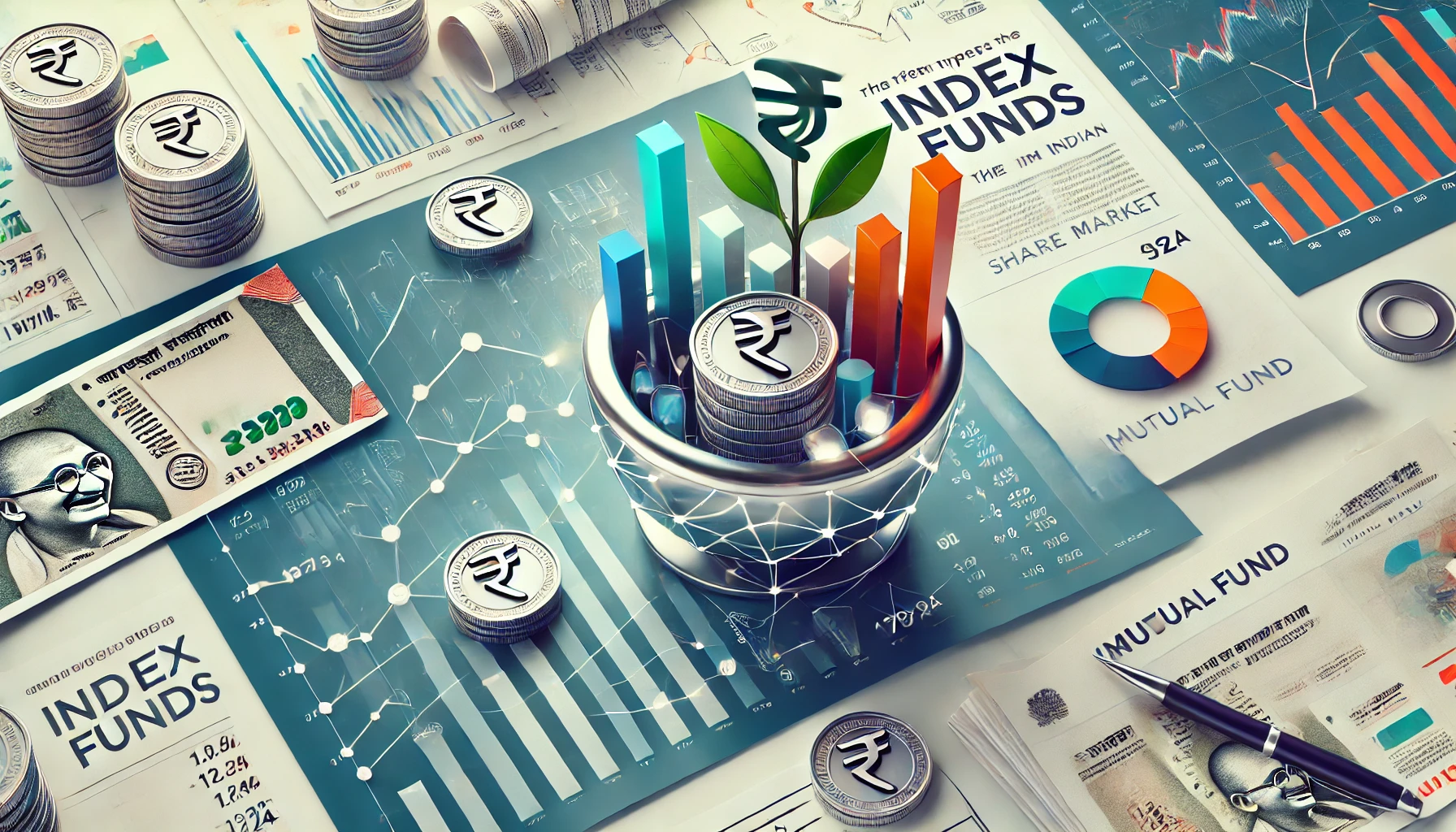Gold funds are a type of mutual fund that invests in gold-related assets, including gold ETFs (Exchange Traded Funds) and the physical commodity itself. These funds allow investors to gain exposure to the price movements of gold without having to purchase and store the physical metal. Instead, investors buy units in the gold fund, and the value of these units fluctuates based on the price of gold.
Gold funds are a popular choice among Indian investors, especially during times of market volatility. Gold has long been considered a safe-haven asset, and its price tends to rise when stock markets decline. This makes gold funds an attractive option for portfolio diversification and wealth preservation.
Key Features of Gold Funds
- Indirect Investment in Gold: Investors do not hold physical gold; rather, they invest in gold ETFs or gold mining companies.
- Low Minimum Investment: Unlike purchasing physical gold, which can be expensive, gold funds allow for investments as low as INR 500.
- Liquidity: Gold funds offer high liquidity as they can be traded on stock exchanges, providing easy entry and exit for investors.
- Hedge Against Inflation: Gold prices tend to rise during inflationary periods, making gold funds an effective hedge against inflation.
- Portfolio Diversification: Including gold funds in a portfolio helps to reduce overall portfolio risk, as gold typically moves inversely to equity markets.
Historical Performance of Gold Funds in India
Let’s look at the historical performance of gold funds in India over the last decade. The table below provides an overview of average returns of gold mutual funds in comparison to the BSE Sensex:
| Year | Gold Fund Average Return (%) | BSE Sensex Return (%) |
|---|---|---|
| 2014 | 12.35% | 29.89% |
| 2015 | -5.68% | -5.03% |
| 2016 | 11.79% | 1.95% |
| 2017 | 4.93% | 27.91% |
| 2018 | 7.76% | 5.91% |
| 2019 | 24.89% | 14.38% |
| 2020 | 28.50% | 15.75% |
| 2021 | -3.56% | 22.04% |
| 2022 | 14.34% | 4.44% |
| 2023 YTD | 8.24% | 11.22% |
Gold funds have demonstrated resilience, particularly during market downturns. For instance, in 2020, when global equity markets took a hit due to the pandemic, gold funds provided a stellar return of 28.50%, outpacing the BSE Sensex.
Why Invest in Gold Funds?
Investors often turn to gold funds for several reasons:
- Risk Mitigation: Gold has a history of performing well during economic crises, offering a buffer against market volatility.
- Long-Term Store of Value: Over the long term, gold retains its purchasing power, making it a reliable store of value.
- Tax Benefits: Gold funds are subject to capital gains tax, and if held for more than three years, they qualify for long-term capital gains tax at a lower rate with indexation benefits.
Types of Gold Funds
Gold funds in India can be broadly categorized into two types:
1. Gold ETFs
Gold ETFs are exchange-traded funds that invest in physical gold. Each unit of a gold ETF represents a specific amount of gold. These ETFs are traded on stock exchanges, making them highly liquid and easy to buy and sell. Investors benefit from transparency, as the performance of a gold ETF closely mirrors the price of physical gold.
- Advantages: High liquidity, transparency, and relatively low costs.
- Disadvantages: Investors need a demat account to invest in gold ETFs.
2. Gold Mining Funds
Gold mining funds invest in the shares of gold mining companies. These funds provide an indirect way to gain exposure to gold, as the fortunes of gold miners are tied to the price of gold. However, gold mining funds are more volatile than gold ETFs since they are subject to both commodity price movements and company-specific risks.
- Advantages: Potentially higher returns compared to gold ETFs due to exposure to gold mining companies.
- Disadvantages: Increased volatility due to company performance.
How to Invest in Gold Funds
Investing in gold funds is straightforward. Here’s a step-by-step guide:
- Choose a Fund: Research and select a gold fund based on historical performance, expense ratio, and investment objective.
- Open an Account: You can invest in gold funds either directly through the fund house’s website or via a demat account if you’re investing in gold ETFs.
- Select Investment Mode: Decide between a lump sum investment or a Systematic Investment Plan (SIP), where you invest a fixed amount at regular intervals.
- Monitor Your Investment: Keep track of gold prices and the performance of your gold fund. While gold funds tend to be stable, external factors such as inflation, geopolitical events, and global economic conditions can affect gold prices.
Risks Involved in Gold Funds
Although gold funds offer several benefits, there are also risks associated with them. These include:
- Price Volatility: The price of gold can be highly volatile, particularly during times of economic uncertainty.
- No Regular Income: Unlike equity or debt funds, gold funds do not provide regular income like dividends or interest.
- Currency Risk: For funds that invest in international gold, currency fluctuations can impact returns.
Factors Impacting Gold Prices
Several factors influence the price of gold, which in turn affects the performance of gold funds:
- Inflation: Higher inflation typically increases gold prices as investors look for a safe haven.
- Interest Rates: Rising interest rates can reduce the appeal of gold as an investment, causing its price to drop.
- Geopolitical Events: Wars, political instability, and other global events often lead to a spike in gold prices due to its status as a safe-haven asset.
Conclusion: Are Gold Funds Right for You?
Gold funds can be a valuable addition to your portfolio, especially if you’re looking for a hedge against inflation and market volatility. They offer an easy and accessible way to gain exposure to gold without the hassle of buying and storing physical gold.
However, like any investment, gold funds come with risks. It’s essential to carefully consider your investment goals, risk tolerance, and time horizon before adding gold funds to your portfolio. Ideally, gold funds should be a part of a diversified investment strategy that balances risk across various asset classes.
If you’re considering investing in gold funds, consult with a financial advisor to determine if they align with your financial objectives.

What are Dividend Yield Mutual Funds?
Dividend yield mutual funds are designed for investors seeking a steady income source from their …

What Is Children’s Mutual Fund?
Children’s mutual funds are specially designed to help parents and guardians build a secure financial …

What are Alpha and Beta in Mutual Funds?
In mutual fund investing, understanding performance metrics like Alpha and Beta is essential for assessing …

Sovereign Gold Bonds vs Mutual Funds
For Indian investors seeking diverse investment opportunities, both Sovereign Gold Bonds (SGB) and mutual funds …

What Is Risk-Return Trade-Off in Mutual Funds?
In mutual fund investments, the risk-return trade-off is a fundamental concept that helps investors balance …

What is a Mutual Fund Manager?
A mutual fund manager plays a crucial role in the success of a mutual fund, …

Debt vs Equity Funds
Investing in mutual funds offers various avenues, with debt and equity funds standing out as …

What are the Different Types of Index Funds?
Index funds have gained popularity among Indian investors for offering a low-cost, diversified approach to …

What is CAMS KRA?
CAMS KRA (Computer Age Management Services KYC Registration Agency) is a crucial player in India’s …

What is Yield to Maturity?
Yield to Maturity (YTM) is a crucial concept in fixed-income investments, especially in mutual funds …

What are Thematic Funds?
In the Indian share market, Thematic Funds have gained popularity as specialized mutual funds tailored …

What is Broad Market Index Fund?
In the Indian share market, Broad Market Index Funds offer a straightforward, cost-effective way for …

What are Retail Fund?
In the Indian financial market, Retail Funds are a key category of mutual funds designed …

What is Regional Fund?
In the evolving landscape of the Indian financial market, Regional Funds have emerged as a …

Can Mutual Funds Change Expense Ratio?
Investing in mutual funds involves paying various fees, one of the most important being the …

What is the Inverted Yield Curve?
In financial markets, the yield curve is a key indicator that investors and economists use …

What are Dynamic Asset Allocation Funds?
Dynamic asset allocation funds, also known as balanced advantage funds, are becoming increasingly popular in …

What are Short Term Capital Gains on Mutual Funds?
Investing in mutual funds has become an increasingly popular way for investors to diversify their …

What are Corporate Bond Funds?
Corporate bond funds are a type of debt mutual fund that invests primarily in high-rated …

What Are Money Market Funds?
Money Market Funds (MMFs) are a type of mutual fund that invests in short-term debt …

What is a Fund of Funds?
A Fund of Funds (FoF) is a mutual fund that invests in other mutual funds …

What is a Credit Risk Fund?
A credit risk fund is a type of debt mutual fund that primarily invests in …

What are Gold Funds?
Gold funds are a type of mutual fund that invests in gold-related assets, including gold …

What is Counterparty Risk?
In the world of investments, especially in Indian share market mutual funds, the concept of …

What is a sinking fund?
In the world of finance and investments, planning ahead for future liabilities is crucial for …

What is IDCW in a Mutual Fund?
Investing in mutual funds offers several options for investors looking to grow their wealth over …

What are growth funds?
Growth funds are a type of mutual fund that primarily focuses on capital appreciation by …

CAGR vs Absolute Returns
When investing in mutual funds, understanding your returns is essential to make informed decisions. Two …

What is a Capital Protection Fund?
A Capital Protection Fund (CPF) is a type of hybrid mutual fund designed to safeguard …

What Is Rupee Cost Averaging in Sip?
Rupee Cost Averaging (RCA) is a systematic investment strategy used in mutual fund investments, particularly …

What are Gilt Funds
Investing in mutual funds can be an excellent way to grow your wealth while managing …

What is Target Maturity Funds?
Target Maturity Funds (TMFs) have gained attention in the Indian share market, offering a unique …

What is KIM?
When investing in Indian mutual funds, investors often come across a document known as the …

Trailing Returns vs Rolling Returns
When analyzing mutual fund performance, understanding returns is crucial for making informed investment decisions. Two …

What is Hybrid Mutual Fund?
When investing in mutual funds, you typically aim to find the right balance between risk …

What is XIRR?
Investing in mutual funds is a popular choice for many investors in India, thanks to …

What is the Sharpe ratio?
In the world of mutual fund investing, one of the most crucial aspects to consider …

What is AMFI?
The Indian mutual funds industry has grown exponentially over the past two decades. This growth …

What is Rolling Returns?
Investing in mutual funds requires understanding various performance metrics to make informed decisions. One such …



















